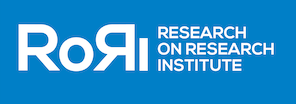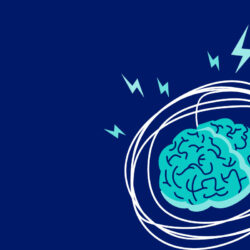Social science sites of the week
Follow our web postings of recommended sites.
London Elects heat map shows where the highest voter turnout levels (according to past results) are likely to be.
The LSE Review of Books This week the LSE has launched its own free online academic service.
It will review scholarly print and eBooks covering the full range of social science subject areas. Subject categories currently available include: Economics and Business studies, Gender, Law and human rights
Media and cultural studies, Philosophy, Politics and international relations, Sociology and anthropology. It is also possible to browse books about specific areas of the world and read posts on books which have influenced academics. The site also has an associated Facebook page to encourage academic book discussion.
Other good sites for book reviews include the great H-Net Reviews, an online scholarly book review service which forms part of the H-Net Humanities and Social Sciences website hosted by the University of Michigan .
Anthropology review database
ARD is a searchable database of reviews of anthropological books, films and videos, audio recordings, software and multimedia and online resources
MapAmericas.
Launched by the InterAmerican Development Bank. A new data visualization tool which maps aid and development projects in the Caribbean and Latin America region which have had IADB involvement. Choose a country and a project, then map the results. The section on results includes financial data, project facts and success stories. It is also possible to map results by specific sectors of aid and development.
Countries currently available include: Bolivia, Guyana, Honduras, Nicaragua, and Uruguay
Following on from last week’s blog.
Mapping French election results
Plus the news that the BNF will be archiving French presidential websites. Although access will be in the reading rooms only.
Here are some mappings of results both current and historic.
Sondages 2012 pour l’élection présidentielle en France. Useful blog compiled by enthusiast Andreas Viklund see details of methodology.
Ministry of the interior official site.
Sciences po database. has results from past elections.
It also has links to past election studies.
Dickens in context
Great learning site from the British library. It enables users to explore themes that appear in Dickens novels in the social context of Victorian England using resources from the British library. Topics include poverty, prisons, industrialisation. Each section has podcasts plus scanned images of original documents. For instance the wealth and poverty section has Booths poverty maps, lists of workhouse food, photographs of Glasgow slums, plus readings from Dickens by Simon callow.
Royal Society Picture library
Free online library taken from the archives of the Royal Society. Includes images, paintings and prints. Photographs and paintings of Royal Society members. Botanical studies and materials relating to the history of science. Material is being added on an on-going basis. See the site for copyright details.
Other recommended art image sites. British Printed Images to 1700
Provides free access to a searchable database of several thousand historic images; mainly taken from the holdings of the Department of Prints and Drawings at the British Museum and the National Art Library at the Victoria and Albert Museum. Search by keyword or browse by subject. Headings include: agriculture, industry and commerce; buildings; nature; military and war; politics and the bible. A resources section provides contextual detail on understanding images of this time period plus links to related websites.
Google Art Project
VADS
Free access to over 12,000 images designed for use in teaching and learning. They include paintings, prints, propaganda posters and fashion designs taken from major UK collections.
U.S. Geological Survey (USGS) historical topographic map collection
Now free online. More than 141,000 GeoPDF maps of the approximate total 180,000 currently available for download. Historical American maps date from 1884 onwards. It is possible to search by keyword, scale.
Seven days of Social Sciences research
New feature on the ESRC website. From 23rd April they will be posting videos text on their website reflecting the breadth of ESRC funded research based on the Monday’s child nursery rhyme. The first instalment fair of face has materials relating to image and identity.
The Universal Human rights index website has been updated.
Quickly trace recommendations relating to individual countries from the leading intergovernmental organisations.
This site combines: United Nations human rights recommendations, Universal Periodic Review, Concluding observations of the ten UN human rights Treaty Bodies. The site has a research guide.
KOFI Annan Syria peace plan.
See the UN special envoy for Syria web page for details of the role of Kofi Annan
See related UN Security Council decisions and press releases relating to the situation in Syria.
Biography of Annan from the Nobel Prize website
EM-DAT: International Disaster database.
Since 1988 the WHO Collaborating Centre for Research on the Epidemiology of Disasters (CRED) has been maintaining an Emergency Events Database EM-DAT.EM-DAT. It contains essential core data on the occurrence and effects of over 18,000 mass disasters in the world from 1900 to present. The database is compiled from various sources, including UN agencies, non-governmental organisations, insurance companies, research institutes and press agencies. Get lists of disasters profiles by country and reference maps. Disasters include natural disasters, technological (and transport accidents)
There are also premade maps of general trends.
The site also has links through to the International disaster data portal. DISDAT is the result of a close collaboration between the Centre for research in Epidemiology of Disasters (CRED) and the Global Risk Identification Program (GRIP).this has links to national and transnational disaster data systems worldwide.
Measuring Peace in the Media 2011
Institute for Economics & Peace produces a number of indexes which measure levels of peace and conflict worldwide. Its latest publication analyses global TV networks coverage of peace and conflict. The full 42 page text can be downloaded from the website.
Its Global Peace Index ranks 153 nations according to 23 dimensions of peace. These include democracy, wellbeing, and violence, crime data is drawn from a number of sources including International Institute of Strategic Studies, The World Bank, various UN Agencies, peace institutes and the EIU. download the report and interactive map from the website.



















































































